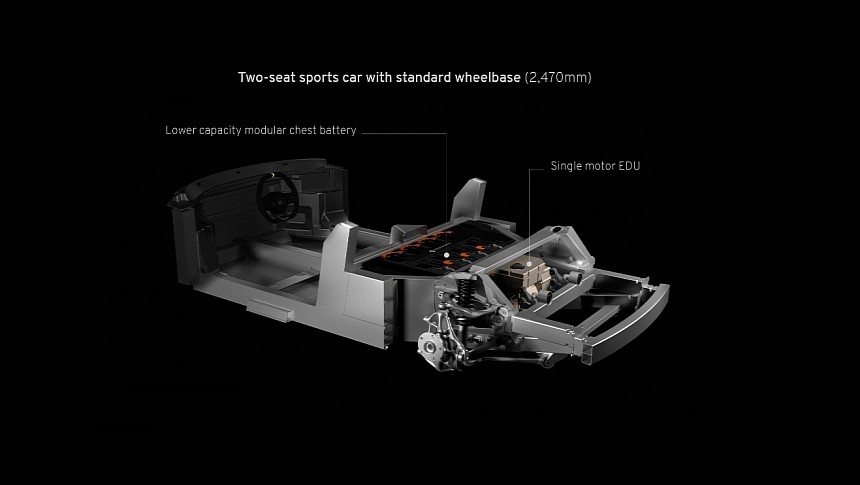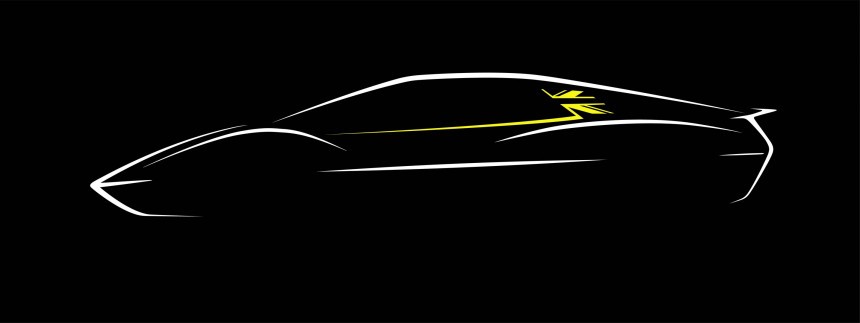Serving as the spiritual successor to the Elise, the Lotus Type 135 will be revealed late 2026 for the 2027 model year. An Emira-replacing model is also expected to join the lineup by decade's end.
The 135 will be priced at circa 75,000 pounds sterling, which means 95,000 freedom eagles at current exchange rates. Developed in Hethel, the newcomer will join the Eletre sport utility vehicle, Emeya sedan, and a D-segment SUV that Lotus refers to as Type 134. Chief commercial officer Mike Johnstone says that Lotus is targeting 10,000 to 15,000 sales per year as opposed to 50,000 for the Eletre and 90,000 for the smaller utility vehicle.
The E-Sports platform on which the 135 is based can accommodate rear- and twin-motor setups with outputs ranging between 469 and 872 horsepower. Despite its battery pack, rear-mounted electric motor, and charging system, the 135 should be mighty fun with 469 horsepower to its name.
The actual output, however, isn't clear at the moment of reporting. Autocar notes that 469 horsepower is almost double the maximum output of the punchiest Exige of them all. The larger and heavier Emira develops up to 400 horsepower in V6 flavor, whereas the AMG-sourced turbo inline-four belts out a respectable 360 ponies at full chatter.
Managing director Matt Windle told Autocar that the E-Sports platform is a product of Project LEVA, with LEVA standing for Lightweight Electric Vehicle Architecture. LEVA is a highly ambitious project, with Lotus confirming at least three distinct applications for it. First and foremost, a two-seater layout with a wheelbase of at least 2,470 millimeters (97.2 inches), a chest-type battery with 8 modules stacked in the middle of the car instead of under the floor, 66.4 kWh, and 350 kW (469 hp) for the rear-mounted electric drive unit.
The second layout is a two-seat affair as well, but with more than 2,650 millimeters (104.3 inches) of wheelbase, a 12-module battery rated at 99.6 kWh, and 650 kW (872 hp) from a twin-motor arrangement. Finally, the final application is 2+2 with more than 2,650 millimeters of wheelbase, a floor-mounted battery with 8 modules and 66.4 kWh, and a choice between one and two motors.
All versions of the LEVA feature a common diecast rear subframe with interchangeable components. LEVA supports 800-volt charging, whereas the chest-type battery of the Type 135 should improve the car's driving dynamics over the underfloor slab-type battery. It should be mentioned that Tesla used a chest-type battery for the original Roadster, which rocks an Elise-derived platform.
Said platform was also shared with Opel and Vauxhall for the Speedster and VX220. Another example would be Hennessey's Venom GT, of which merely 13 units were assembled in total. Had it not been for Aerosmith's Steven Tyler, John Hennessey may have never considered making an open-top version.
Lotus is currently developing the E-Sports platform at the company's spiritual home of Hethel. The Type 135 will also be produced in Hethel, meaning that the Lotus factory is due for expansion in the near future.
The E-Sports platform on which the 135 is based can accommodate rear- and twin-motor setups with outputs ranging between 469 and 872 horsepower. Despite its battery pack, rear-mounted electric motor, and charging system, the 135 should be mighty fun with 469 horsepower to its name.
The actual output, however, isn't clear at the moment of reporting. Autocar notes that 469 horsepower is almost double the maximum output of the punchiest Exige of them all. The larger and heavier Emira develops up to 400 horsepower in V6 flavor, whereas the AMG-sourced turbo inline-four belts out a respectable 360 ponies at full chatter.
Managing director Matt Windle told Autocar that the E-Sports platform is a product of Project LEVA, with LEVA standing for Lightweight Electric Vehicle Architecture. LEVA is a highly ambitious project, with Lotus confirming at least three distinct applications for it. First and foremost, a two-seater layout with a wheelbase of at least 2,470 millimeters (97.2 inches), a chest-type battery with 8 modules stacked in the middle of the car instead of under the floor, 66.4 kWh, and 350 kW (469 hp) for the rear-mounted electric drive unit.
All versions of the LEVA feature a common diecast rear subframe with interchangeable components. LEVA supports 800-volt charging, whereas the chest-type battery of the Type 135 should improve the car's driving dynamics over the underfloor slab-type battery. It should be mentioned that Tesla used a chest-type battery for the original Roadster, which rocks an Elise-derived platform.
Said platform was also shared with Opel and Vauxhall for the Speedster and VX220. Another example would be Hennessey's Venom GT, of which merely 13 units were assembled in total. Had it not been for Aerosmith's Steven Tyler, John Hennessey may have never considered making an open-top version.
Lotus is currently developing the E-Sports platform at the company's spiritual home of Hethel. The Type 135 will also be produced in Hethel, meaning that the Lotus factory is due for expansion in the near future.










